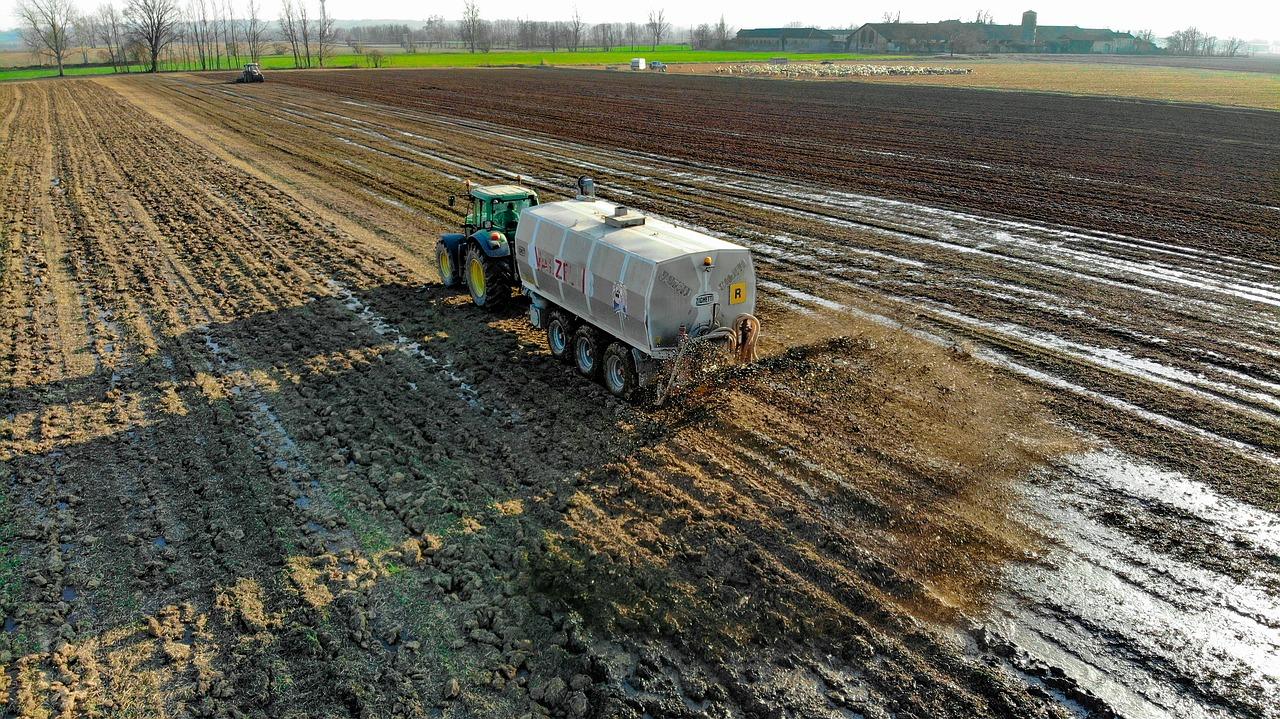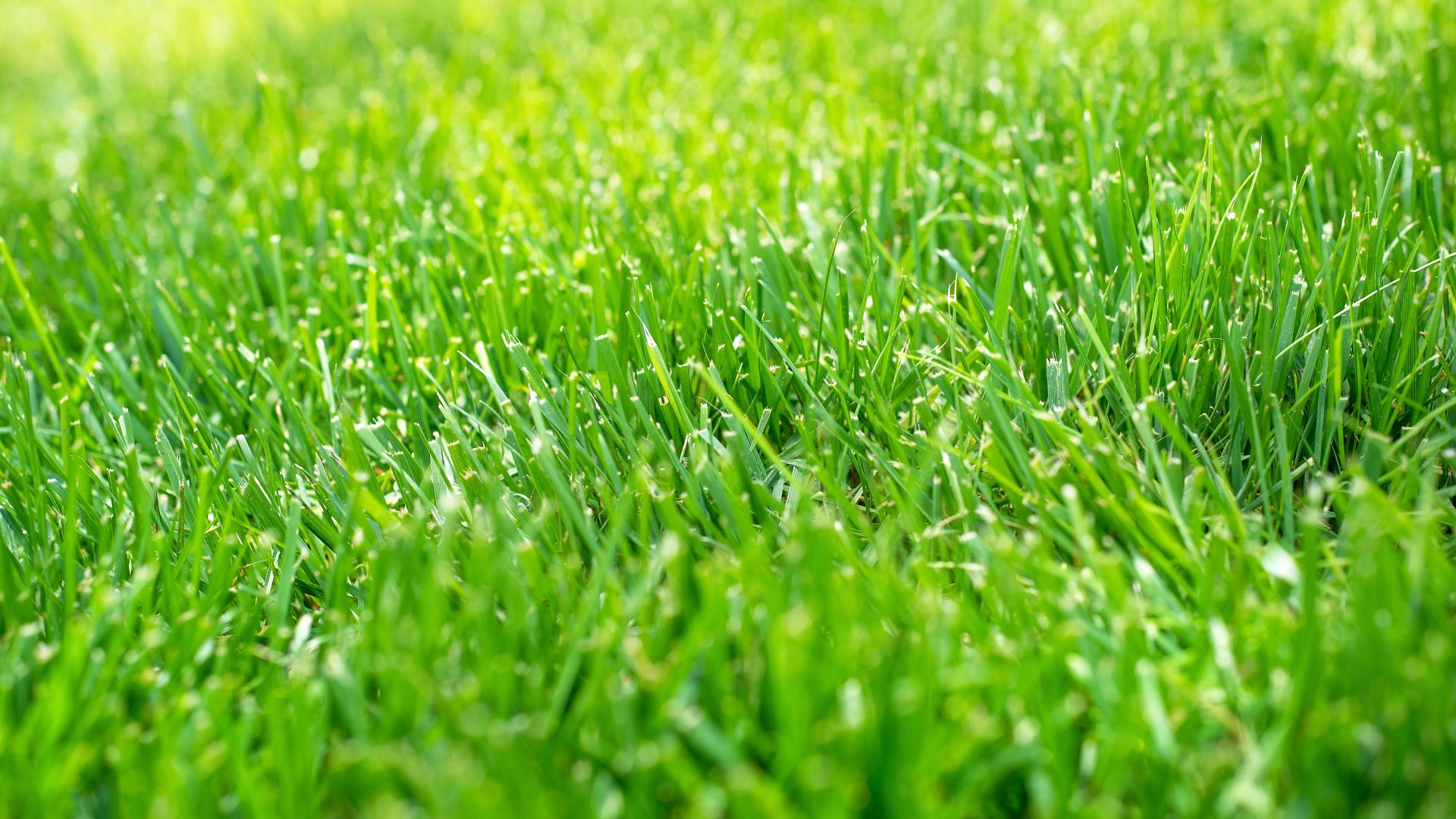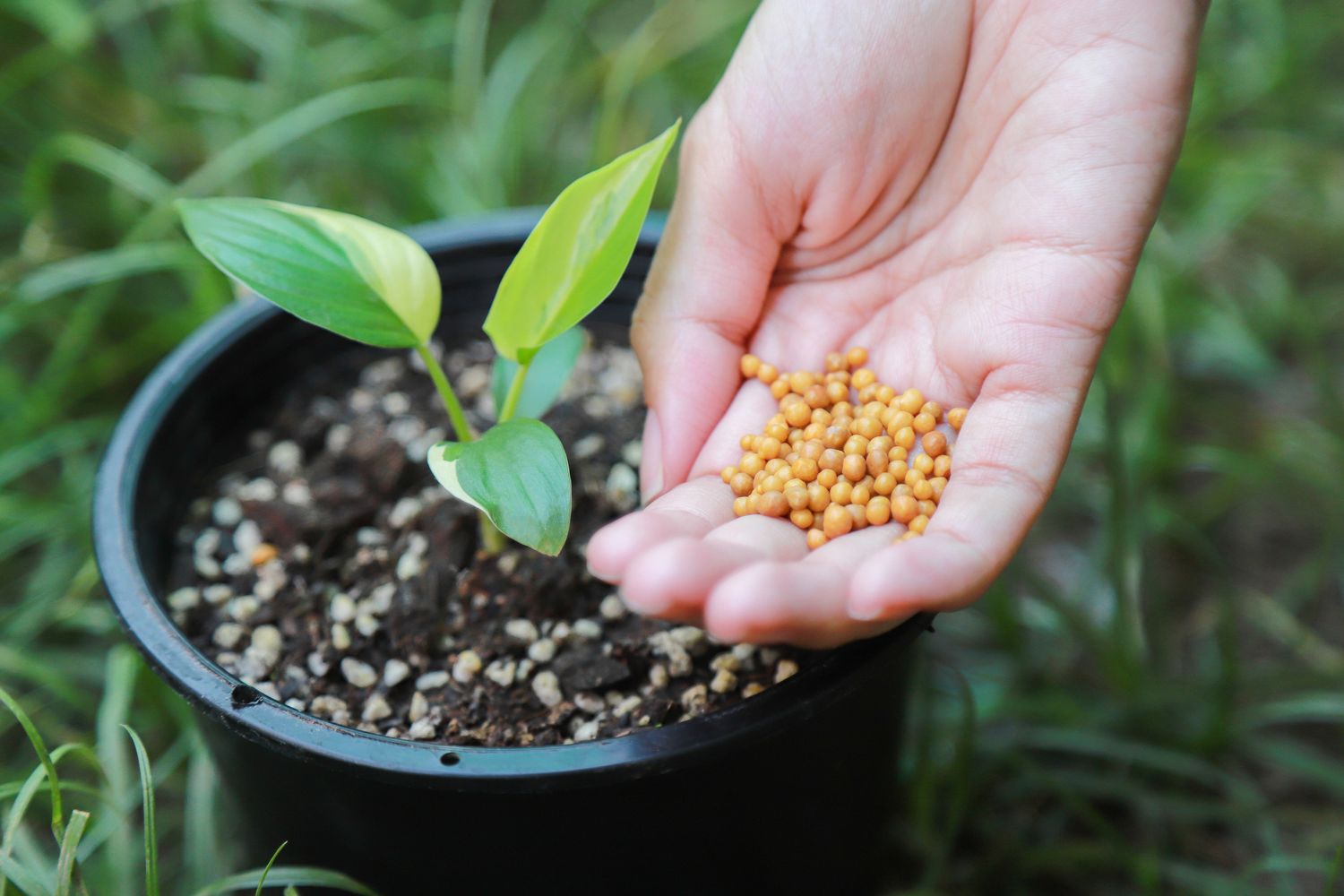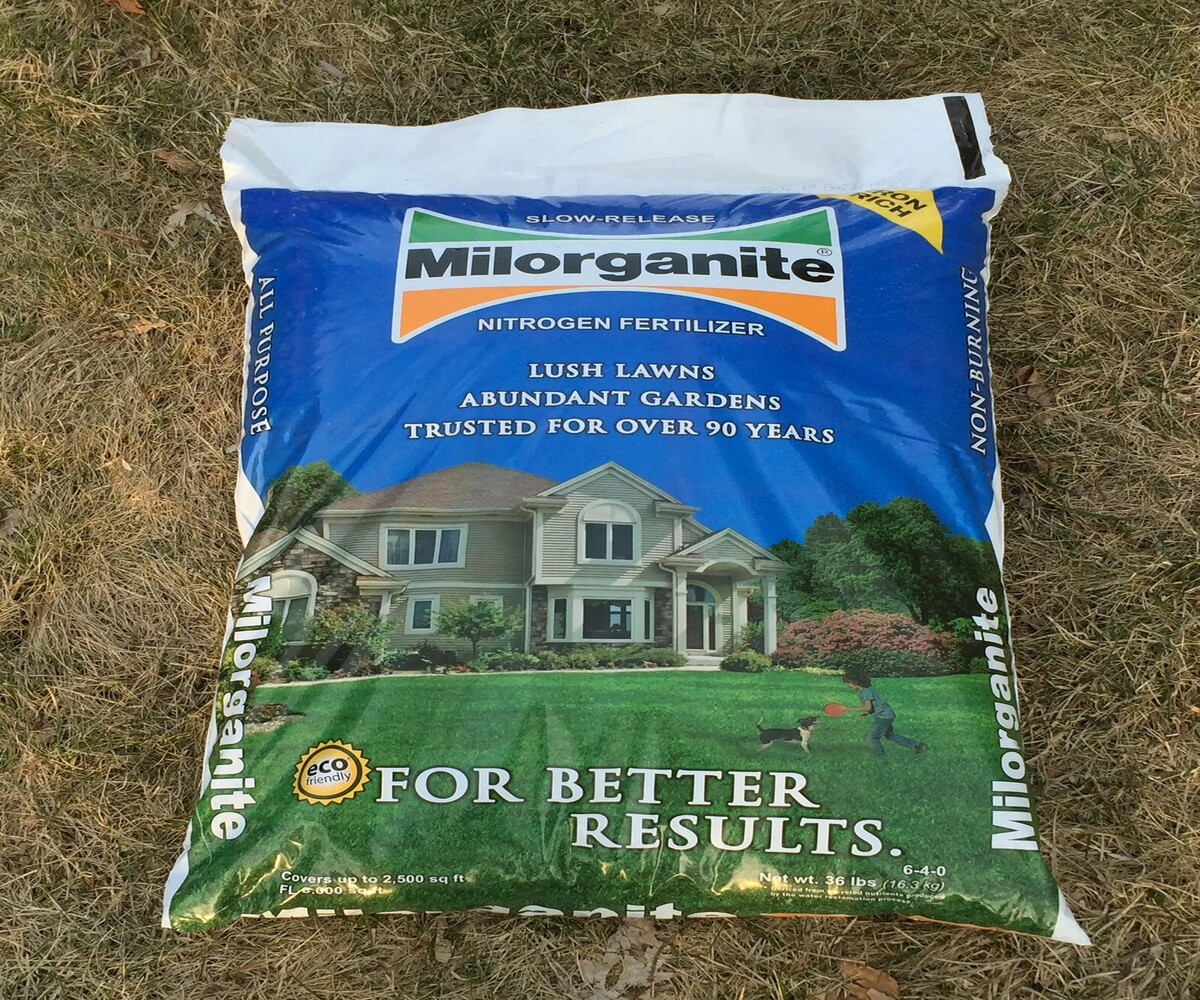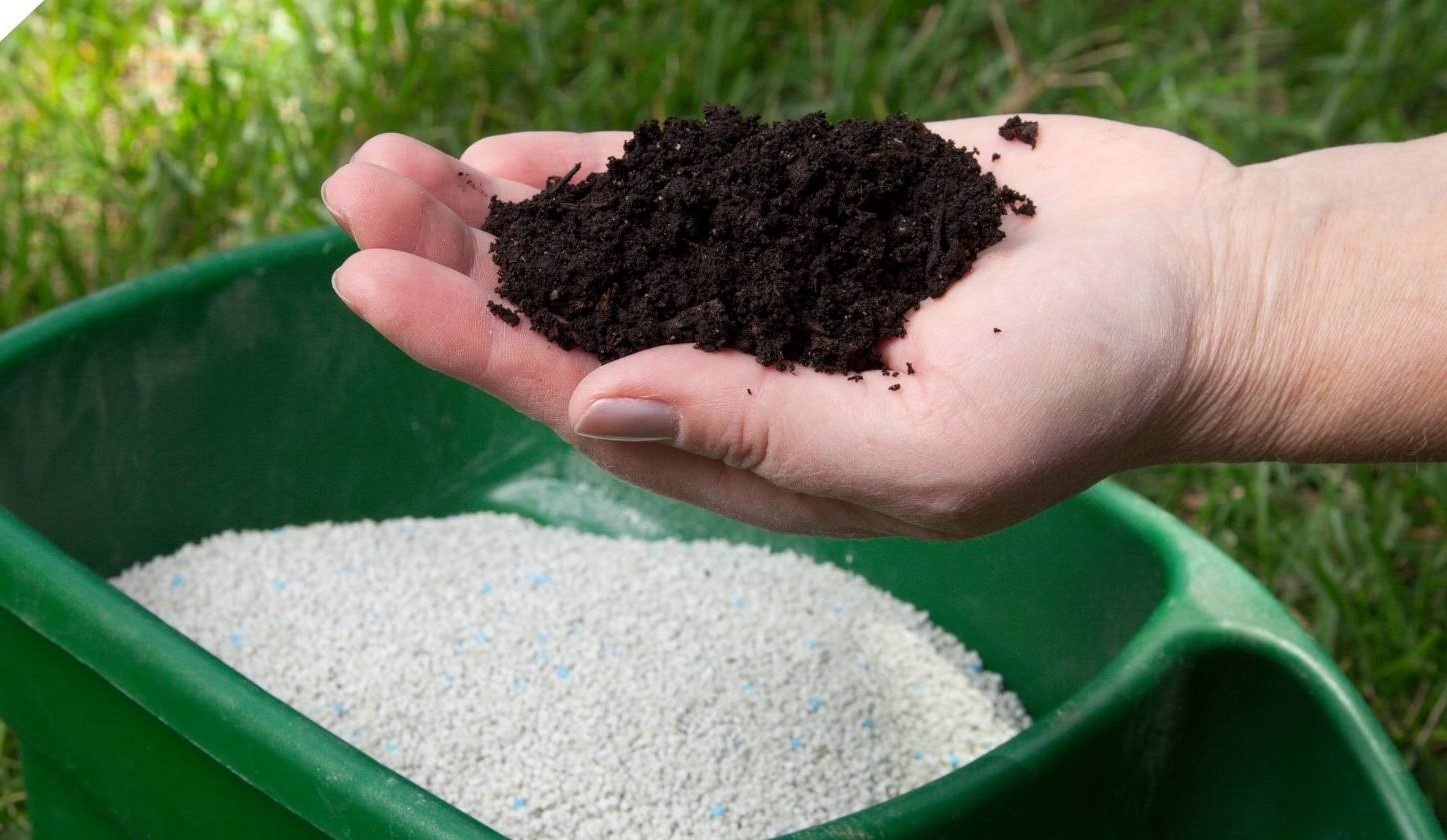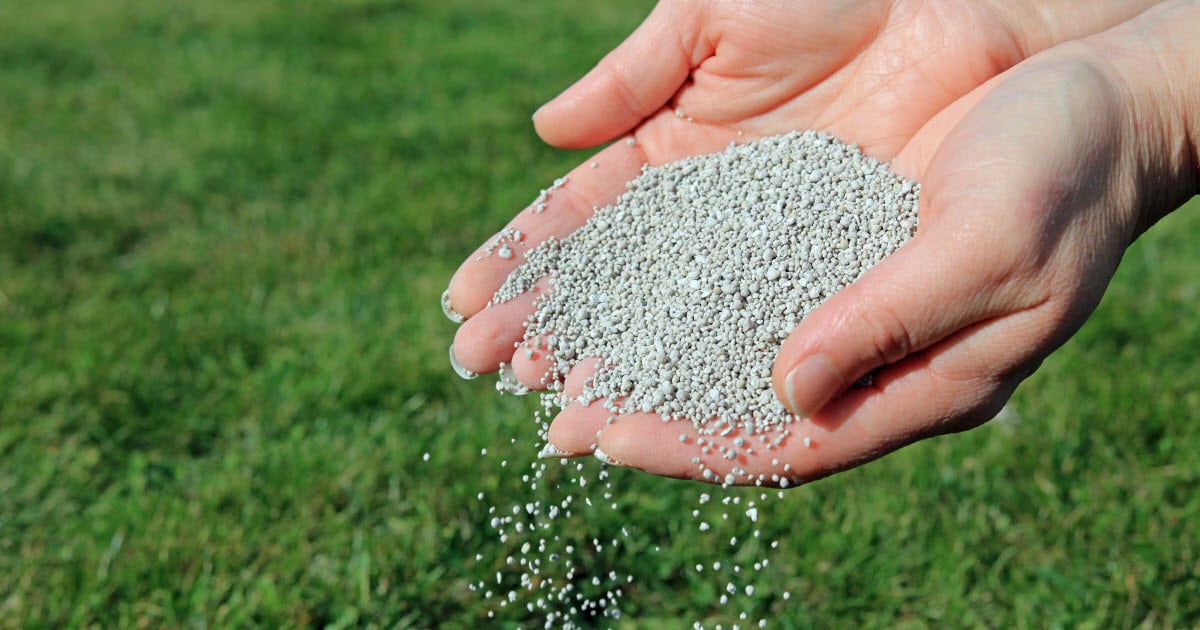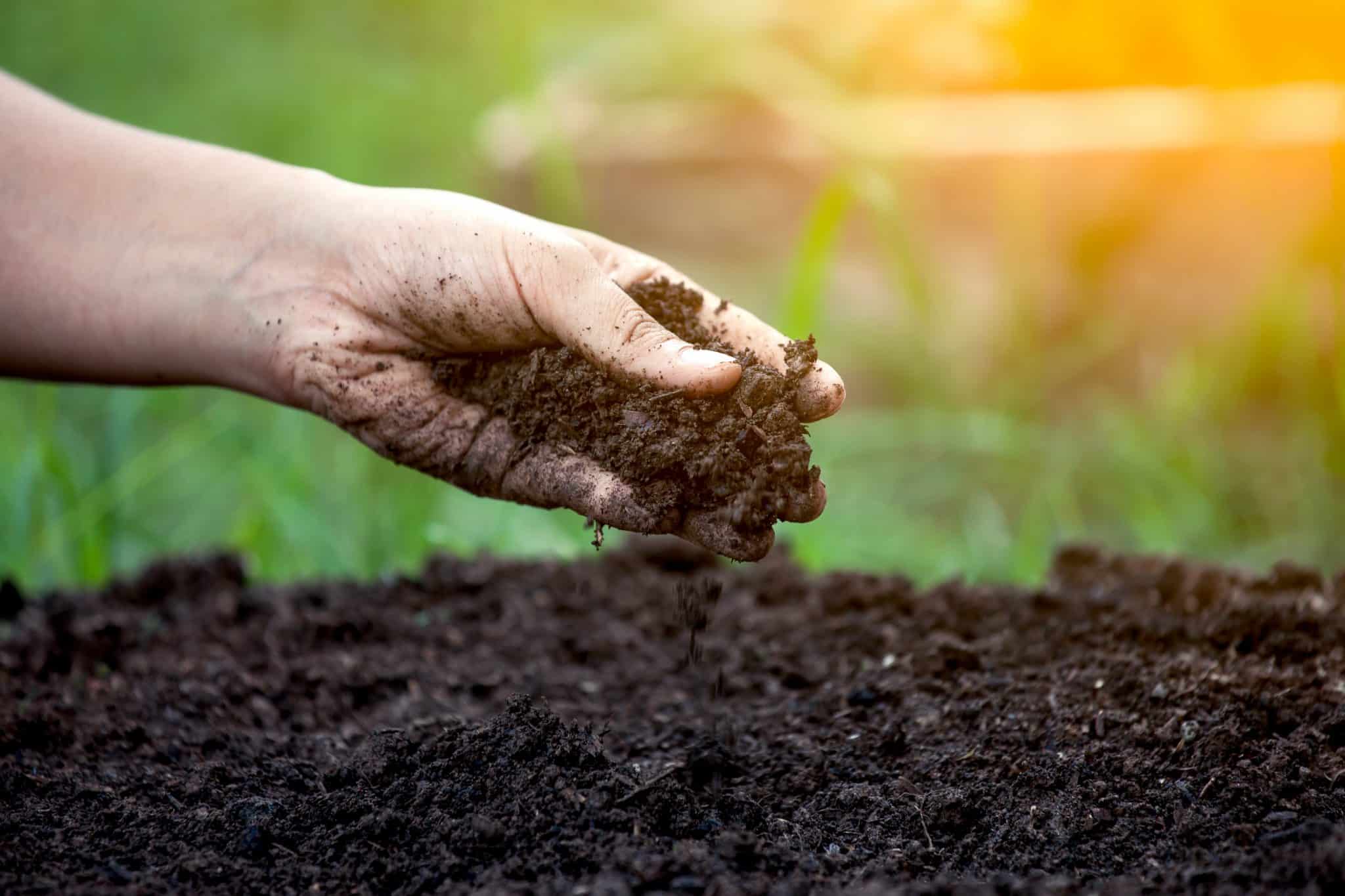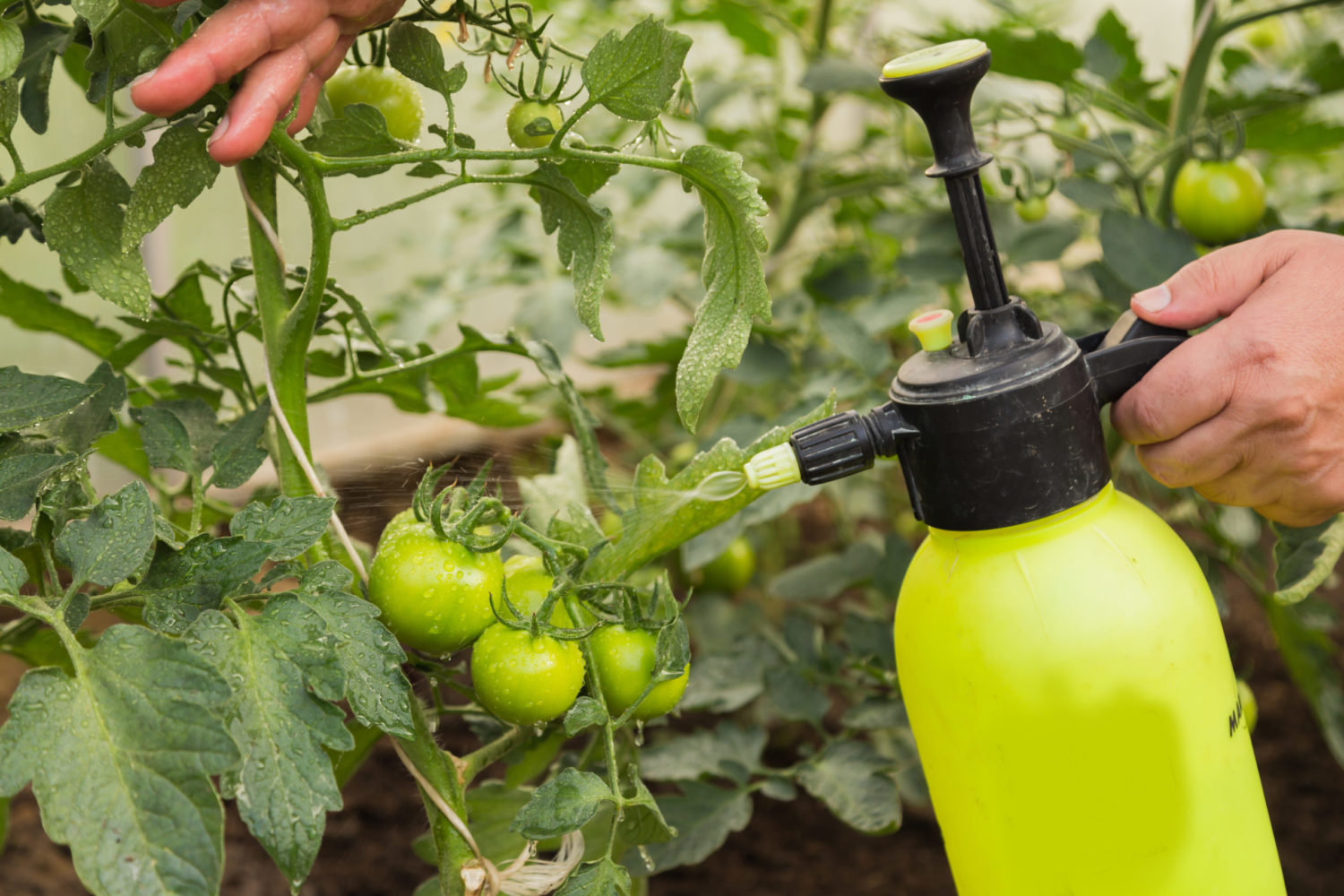Home>Gardening Basics>What Is A 20-20-20 Fertilizer


Gardening Basics
What Is A 20-20-20 Fertilizer
Modified: January 22, 2024
Learn about getting started with a 20-20-20 fertilizer, its benefits, and how to use it effectively to improve your plant's growth and health.
(Many of the links in this article redirect to a specific reviewed product. Your purchase of these products through affiliate links helps to generate commission for Chicagolandgardening.com, at no extra cost. Learn more)
Table of Contents
Introduction
Welcome to the world of gardening and fertilization! If you’re new to the world of fertilizers, you might have come across the term “20-20-20 fertilizer” and wondered what it means. Fertilizers play a crucial role in maintaining the health and vitality of plants, and understanding different types of fertilizers can help you make informed decisions for your gardening needs.
A 20-20-20 fertilizer is a type of balanced fertilizer that contains three essential nutrients: nitrogen, phosphorus, and potassium in equal proportions. These nutrients are often referred to as NPK, representing their chemical symbols. The numbers 20-20-20 indicate the percentage of each nutrient present in the fertilizer.
In this article, we’ll explore the composition of a 20-20-20 fertilizer, how it works, and the benefits and potential drawbacks of using it. We’ll also discuss the proper application of this fertilizer and explore alternatives that might suit your specific gardening needs.
Whether you’re a beginner gardener or an experienced one looking to expand your knowledge on fertilizers, this article will provide you with essential insights into the world of 20-20-20 fertilizers and help you make better decisions for the health and vibrancy of your plants.
What is a 20-20-20 fertilizer?
A 20-20-20 fertilizer is a type of balanced fertilizer that contains equal proportions of three essential nutrients: nitrogen (N), phosphorus (P), and potassium (K). These nutrients, also known as NPK, are crucial for the growth and development of plants.
Nitrogen is responsible for promoting leafy green growth and overall plant vigor. It plays a vital role in photosynthesis, protein synthesis, and chlorophyll production. Phosphorus is essential for root development, flowering, and fruiting. It aids in energy metabolism, DNA synthesis, and the transfer of energy within plants. Potassium, on the other hand, helps plants withstand stress, improves disease resistance, and enhances overall plant health.
The numbers 20-20-20 represent the percentage of each nutrient contained in the fertilizer. In a 20-20-20 fertilizer, each nutrient accounts for 20% of the total composition. This balance ensures that plants receive an equal amount of each nutrient, providing them with the necessary building blocks for healthy growth.
It is important to note that the NPK ratio in a 20-20-20 fertilizer is considered balanced. Balanced fertilizers are typically used for overall plant maintenance and are suitable for a wide range of plants and gardening situations. However, different plants have different nutrient requirements, so it’s important to consider the specific needs of your plants before choosing a fertilizer.
Now that you have a better understanding of what a 20-20-20 fertilizer is and its composition, let’s delve deeper into how this fertilizer works and the benefits it can offer to your plants.
Composition of a 20-20-20 fertilizer
A 20-20-20 fertilizer is carefully formulated to provide plants with a balanced blend of essential nutrients. Let’s take a closer look at the composition of this fertilizer and the roles each nutrient plays:
Nitrogen (N): Nitrogen is a vital nutrient that is responsible for promoting healthy vegetative growth in plants. It plays a key role in the production of chlorophyll, which is essential for photosynthesis. Chlorophyll gives plants their green color and helps them convert sunlight into energy. Nitrogen also aids in protein synthesis, which is necessary for the production of enzymes and other important plant components.
Phosphorus (P): Phosphorus is crucial for root development, flowering, and fruiting in plants. It is involved in many metabolic processes, including energy transfer and storage. Phosphorus helps in the formation and transfer of nutrients within the plant, promoting overall plant growth and development. It also plays a significant role in seed production and plant reproduction.
Potassium (K): Potassium is essential for overall plant health and plays a vital role in various physiological processes. It helps plants maintain proper water balance, improves disease resistance, and enhances photosynthesis. Potassium also promotes the transportation of sugars and other nutrients throughout the plant, ensuring that all parts of the plant receive the necessary resources for growth and development.
In a 20-20-20 fertilizer, these three nutrients are present in equal proportions, with each nutrient accounting for 20% of the total composition. This balance ensures that plants receive a sufficient amount of each essential nutrient without causing an imbalance that may lead to deficiencies or excesses.
In addition to nitrogen, phosphorus, and potassium, 20-20-20 fertilizers may also contain other micronutrients, such as calcium, magnesium, iron, and zinc. These micronutrients are required in smaller quantities but are equally important for healthy plant growth.
Now that we’ve explored the composition of a 20-20-20 fertilizer, let’s understand how these nutrients work synergistically to benefit your plants.
How does a 20-20-20 fertilizer work?
A 20-20-20 fertilizer works by providing plants with a balanced supply of essential nutrients that are necessary for their growth and development. Let’s explore how each nutrient in this fertilizer contributes to the overall functioning of plants:
Nitrogen (N): The nitrogen in a 20-20-20 fertilizer plays a crucial role in promoting leafy green growth. It is necessary for the synthesis of chlorophyll, which is essential for photosynthesis. As plants photosynthesize, they convert sunlight, carbon dioxide, and water into oxygen and glucose, which serves as their primary source of energy. Nitrogen also aids in protein synthesis, ensuring that plants have the necessary building blocks for various cellular processes.
Phosphorus (P): Phosphorus in the fertilizer is responsible for root development, flowering, and fruiting. It helps plants convert energy from sunlight into chemical energy that can be used for growth and reproduction. Phosphorus is essential for the transfer and storage of energy within plants, allowing them to thrive and produce vibrant flowers and bountiful fruits. It also plays a role in DNA synthesis and cell division, ensuring healthy growth at the molecular level.
Potassium (K): Potassium is involved in a wide range of physiological processes within plants. It helps regulate water balance, enabling plants to efficiently absorb and utilize water. Potassium aids in the opening and closing of stomata, which are tiny openings on the surface of leaves that control gas exchange and water loss. This element also enhances disease resistance, as it strengthens cell walls and improves plant immune responses. Additionally, potassium is essential for the transportation of sugars and other nutrients throughout plants, ensuring that all parts receive the necessary resources for growth and development.
When a 20-20-20 fertilizer is applied to the soil or foliage, the essential nutrients it contains become available for plants to absorb and utilize. These nutrients are taken up by the plant’s roots and transported to various parts of the plant through the vascular system. The balanced NPK ratio in the fertilizer ensures that plants receive a well-rounded supply of nutrients, promoting healthy growth and development across all plant parts.
It’s important to follow proper application guidelines to ensure that the fertilizer is used effectively. Overuse or incorrect application can lead to nutrient imbalances or damage to plants. Understanding the specific needs of your plants and following recommended dosage instructions will help you maximize the benefits of a 20-20-20 fertilizer.
Now that we understand how a 20-20-20 fertilizer works, let’s explore the benefits it offers to gardeners and their plants.
Benefits of using a 20-20-20 fertilizer
Using a 20-20-20 fertilizer can provide several beneficial effects on your plants and enhance their overall health and productivity. Let’s explore some of the key advantages of using this type of balanced fertilizer:
Promotes balanced growth: The balanced composition of a 20-20-20 fertilizer ensures that plants receive an equal supply of nitrogen, phosphorus, and potassium. This balanced nutrition promotes overall plant growth, from healthy root development to lush foliage and vibrant blooms. It helps achieve a harmonious balance between vegetative growth and reproductive processes, leading to robust and well-rounded plant development.
Enhances flowering and fruiting: The adequate supply of phosphorus in a 20-20-20 fertilizer promotes flower formation and fruit development. It stimulates the initiation of blooms and supports the transition from flowering to fruiting. An appropriate level of phosphorus allows plants to allocate their energy towards producing healthy and abundant flowers, leading to an increase in fruit production and quality.
Strengthens plant immunity: The potassium content in a 20-20-20 fertilizer contributes to strengthening plant immunity and resistance against diseases and pests. Potassium improves the thickness and strength of cell walls, making it more challenging for pathogens and insects to invade. Stronger plants are better equipped to withstand stressors and environmental fluctuations, resulting in healthier and more resilient plants.
Improves nutrient uptake and efficiency: The balanced combination of nitrogen, phosphorus, and potassium in a 20-20-20 fertilizer enhances the absorption and utilization of other essential nutrients in the soil. Nitrogen ensures the efficient uptake of nutrients, while phosphorus aids in their transport within the plant. Potassium helps regulate water balance and facilitates the movement of nutrients to where they are needed most. This improved nutrient uptake and efficiency contribute to better overall plant nutrition and optimize the use of available resources.
Suits a wide range of plants and applications: A 20-20-20 fertilizer is versatile and suitable for various types of plants, including flowers, vegetables, fruits, and even lawns. Its balanced nutrient composition makes it a popular choice for general plant maintenance and regular feeding. Whether you’re a beginner gardener or an experienced horticulturist, a 20-20-20 fertilizer provides a convenient option to support the growth and health of a wide range of plants.
By using a 20-20-20 fertilizer appropriately and in accordance with the specific needs of your plants, you can reap these benefits and enjoy healthier, more vigorous growth. However, it’s important to be aware of some potential drawbacks associated with the use of this fertilizer, which we’ll explore in the next section.
Potential drawbacks of using a 20-20-20 fertilizer
While a 20-20-20 fertilizer offers numerous benefits, there are a few potential drawbacks to keep in mind when using this type of balanced fertilizer:
Potential nutrient imbalances: Although a 20-20-20 fertilizer contains equal proportions of nitrogen, phosphorus, and potassium, it may not be the ideal ratio for every plant or soil condition. Different plants have varying nutrient requirements, and certain soil types might have specific nutrient deficiencies or imbalances. Using a balanced fertilizer may not address these specific needs, and a more tailored fertilizer with different NPK ratios might be more suitable in such cases.
Environmental impact: Excessive or improper use of any fertilizer, including a 20-20-20 fertilizer, can lead to environmental issues. When applied in excessive amounts, the excess nutrients can potentially leach into groundwater or runoff into nearby bodies of water, causing water pollution. It’s essential to follow recommended application rates and practices to minimize the risk of environmental impact.
Promotes excessive vegetative growth: Due to the balanced proportions of nutrients, a 20-20-20 fertilizer can encourage excessive leafy growth at the expense of other plant processes, such as flowering and fruiting. For plants that are desired for their blooms or fruits, using a fertilizer with a higher phosphorus or potassium ratio during the appropriate growth stages might be more beneficial.
Potential salt buildup: Continual and excessive use of 20-20-20 fertilizer without proper leaching or flushing can lead to salt buildup in the soil. Over time, this can adversely affect soil structure and nutrient availability. To mitigate this risk, it’s important to practice proper soil management, including regular watering and occasional leaching to remove excess salts from the root zone.
Cost considerations: Depending on the brand and specific formulation, 20-20-20 fertilizer products can vary in cost. They might be more expensive compared to other specialized fertilizers tailored to specific plant needs. Consider your budget and the specific requirements of your plants before deciding on a fertilizer choice.
Despite these potential drawbacks, a 20-20-20 fertilizer can be an effective and convenient option for general plant maintenance. However, it’s crucial to consider the specific needs of your plants, soil conditions, and environmental factors to ensure optimal results and minimize any potential negative impacts.
How to properly apply a 20-20-20 fertilizer
Proper application of a 20-20-20 fertilizer is essential to ensure that your plants receive the right amount of nutrients without any negative side effects. Here are some guidelines to follow when applying this type of balanced fertilizer:
1. Determine the appropriate dosage: Read the instructions on the fertilizer package to determine the recommended dosage for your specific plants. This dosage will depend on factors such as plant type, size, and growth stage. Avoid over-fertilizing, as this can lead to nutrient imbalances or salt buildup in the soil.
2. Consider the growth stage of your plants: Different plants have varying nutrient requirements at different stages of growth. For example, during the vegetative phase, plants often require higher levels of nitrogen for leafy growth. Adjust the application rates accordingly to meet the specific needs of your plants at each growth stage.
3. Choose the right application method: 20-20-20 fertilizers can be applied in various ways, such as broadcasting, top-dressing, or incorporating into the soil during planting. The choice of method will depend on the plants being fertilized and the soil type. Ensure even distribution of the fertilizer to promote uniform nutrient uptake.
4. Timing is crucial: Apply the 20-20-20 fertilizer at the appropriate time to maximize its benefits. For most plants, it’s best to apply the fertilizer during the active growing season when plants can readily absorb and utilize the nutrients. Avoid applying the fertilizer during periods of drought or when the plants are under stress.
5. Water thoroughly after application: After applying the fertilizer, water the plants thoroughly to help dissolve and distribute the nutrients in the soil. This step is crucial for nutrient uptake by the plant roots. Adequate watering also helps prevent the risk of nutrient burn or fertilizer runoff.
6. Monitor and adjust as needed: Regularly monitor your plants for any signs of nutrient deficiencies or excesses. Changes in leaf color, stunted growth, or poor flowering can indicate nutrient imbalances. Adjust the fertilization program accordingly, either by increasing or decreasing the fertilizer application rates or opting for a different NPK ratio if necessary.
7. Practice proper storage and safety: Store the fertilizer in a cool, dry place, away from children and pets. Follow the guidelines on the fertilizer package for proper handling and safety precautions. Take care not to inhale or ingest the fertilizer, and wash hands thoroughly after handling.
By following these guidelines, you can ensure that your plants receive the right amount of nutrients at the right time, promoting their health and vitality without any adverse effects. Remember that proper application and dosage are crucial to optimizing the benefits of a 20-20-20 fertilizer.
Alternatives to a 20-20-20 fertilizer
While a 20-20-20 fertilizer is a versatile option for general plant maintenance, there are several alternatives available that cater to specific plant needs or gardening practices. Here are a few alternatives you can consider:
1. Specialized fertilizers: Depending on the specific requirements of your plants, there are fertilizers formulated for certain types of plants or specific stages of growth. For example, there are fertilizers designed for acid-loving plants like azaleas and camellias, or bloom-boosting fertilizers formulated to enhance flower production. These specialized fertilizers provide targeted nutrition based on the unique needs of particular plants or growth phases.
2. Organic fertilizers: If you prefer an organic gardening approach, organic fertilizers can be excellent alternatives to synthetic fertilizers like the 20-20-20 formula. Organic fertilizers are derived from natural sources such as compost, manure, or bone meal. They release nutrients slowly and improve soil health over time. Organic fertilizers are environmentally friendly and promote microbial activity in the soil.
3. Slow-release fertilizers: Slow-release fertilizers provide a steady supply of nutrients to plants over an extended period. These fertilizers are designed to release nutrients gradually, supplying plants with a continuous source of nutrition. Slow-release fertilizers can help reduce the risk of over-fertilization and nutrient leaching compared to fast-acting fertilizers. They are convenient for busy gardeners or for application in containers and hanging baskets.
4. Liquid fertilizers: Liquid fertilizers come in concentrated forms that can be dissolved in water and applied directly to the soil or foliage of plants. They are quickly absorbed by plants and provide an instant nutrient boost. Liquid fertilizers are suitable for foliar feeding, where nutrients are absorbed through the leaves, and they can be applied alongside regular watering routines to provide an extra nutrient source for plants.
5. Natural amendments: Instead of relying solely on fertilizers, you can consider using natural amendments to enrich the soil. Adding compost, worm castings, or well-rotted manure to the soil can improve fertility and provide a range of nutrients to support plant growth. Natural amendments also enhance soil structure, moisture retention, and microbial activity, promoting long-term soil health and plant vitality.
6. Soil testing and customized blends: To ensure the optimal nutrition for your plants, consider conducting a soil test to determine its nutrient composition and pH level. Based on the results, you can create a customized blend of fertilizers or amendments to address any deficiencies and tailor the nutrient balance to the specific needs of your plants.
Remember, when choosing an alternative fertilizer, it’s important to consider the specific requirements of your plants, your gardening practices, and any environmental considerations. Each alternative has its own benefits and applications, so finding the right fit for your garden will help you achieve optimal growth and overall plant health.
Conclusion
Understanding the world of fertilizers is essential for nurturing healthy plants and achieving abundant growth. The 20-20-20 fertilizer, with its balanced composition of nitrogen, phosphorus, and potassium, is a versatile option for general plant maintenance. It provides plants with the essential nutrients they need for robust growth, vibrant blooms, and bountiful harvests.
By using a 20-20-20 fertilizer, you can promote balanced growth, enhance flowering and fruiting, strengthen plant immunity, and improve overall nutrient uptake and efficiency. This type of fertilizer suits a wide range of plants and applications, making it a popular choice among gardeners of all levels of expertise.
However, it’s important to be aware of potential drawbacks and considerations when using a 20-20-20 fertilizer. Nutrient imbalances, environmental impact, excessive vegetative growth, salt buildup, and cost considerations should be taken into account to ensure responsible use. Additionally, exploring alternatives to the 20-20-20 fertilizer, such as specialized fertilizers, organic options, slow-release formulations, liquid fertilizers, and natural amendments, can offer tailored solutions to specific plant needs or gardening practices.
Ultimately, successful fertilizer application involves finding the right balance between the nutritional requirements of your plants, your gardening goals, and environmental sustainability. Regular monitoring, adjusting dosage and application timing, and practicing proper storage and safety are key factors in achieving optimal results.
Armed with this knowledge, you can confidently navigate the world of fertilizers and make informed decisions that will promote the health, vitality, and beauty of your plants. Whether you choose a 20-20-20 fertilizer or one of the many alternatives available, the key is to provide your plants with the essential nutrients they need to thrive and flourish.


